Forest Legacy Program

The Forest Legacy Program (FLP) is a conservation program administered in partnership by the USDA Forest Service (Forest Service) and state agencies. The purpose of the FLP is to identify and conserve environmentally and economically important forested areas threatened by conversion to non-forest uses.
FLP is funded by the Land and Water Conservation Fund (LWCF), which invests earnings from offshore oil and gas leasing to conserve important land, water, and recreation areas. The passage of the Great American Outdoors Act (GAOA) in August 2020 provided permanent funding for LWCF.
FLP encourages the protection of privately owned managed forest lands through conservation easements (CEs) or land purchases (fee simple). Landowners who participate in the program either sell their property outright or retain ownership and sell only a portion of the property’s development rights. The use of a CE, a perpetual legal agreement, allows the land to remain in private ownership while ensuring that its environmental values are retained. By incentivizing landowners to keep their forests as forests, FLP preserves public benefits, encourages sustainable forest management, and supports forest product markets.
Protecting forest lands maintains a wide range of public benefits, including water quality, fish and wildlife habitat, and forest product industries. In addition, many projects include public access and recreation opportunities. Since its inception, FLP has conserved over 2.8 million acres of forest land across 53 states and territories. As private forest lands continue to face increasing conversion pressure, FLP remains a critically important conservation tool.
Recent News
For the latest announcement, view the USDA press release and list of awarded projects.
Forest Legacy in the West
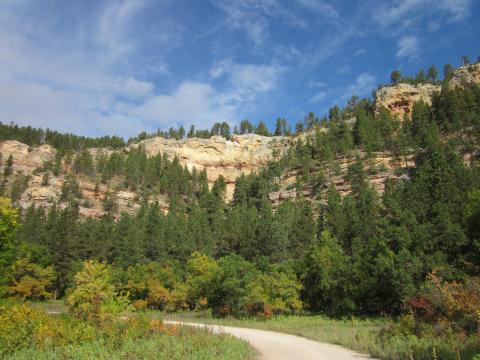
In the western United States, FLP is crucial to the preservation of working forests, protection of communities from wildfire, and the conservation of wildlife and their habitat.
The Western Forestry Leadership Coalition, in cooperation with western state forestry agencies and the Forest Service, developed a publication to highlight the benefits of the FLP across the western states.
Download the WFLC Forest Legacy publication.
Individual state stories can be accessed below.
 The San Pedro River Ecosystem Forest Legacy Project is situated on 612 acres of riparian forest along the San Pedro River and is permanently protected through the use of a conservation easement enabled by the USDA Forest Service Forest Legacy Program.
The San Pedro River Ecosystem Forest Legacy Project is situated on 612 acres of riparian forest along the San Pedro River and is permanently protected through the use of a conservation easement enabled by the USDA Forest Service Forest Legacy Program.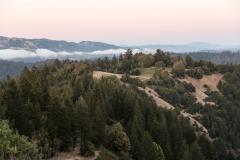 The Mailliard Working Forest is the largest non-industrial, privately-held redwood forest in the United States. It has long been a top conservation priority for the State of California.
The Mailliard Working Forest is the largest non-industrial, privately-held redwood forest in the United States. It has long been a top conservation priority for the State of California.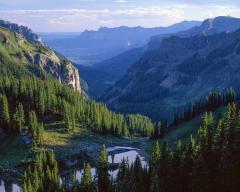 The Navajo River Headwaters conservation easement protecting 16,723 acres is the culmination of a 20-year public-private effort to conserve 50,000 acres of southwest Colorado and northern New Mexico. Threatened by the expansion of nearby tourist destinations, the property’s conservation through the USDA Forest Service Forest Legacy Program (FLP) ensures its continued protection of an essential watershed, critical wildlife habitat, and an active timber and hunting economy.
The Navajo River Headwaters conservation easement protecting 16,723 acres is the culmination of a 20-year public-private effort to conserve 50,000 acres of southwest Colorado and northern New Mexico. Threatened by the expansion of nearby tourist destinations, the property’s conservation through the USDA Forest Service Forest Legacy Program (FLP) ensures its continued protection of an essential watershed, critical wildlife habitat, and an active timber and hunting economy.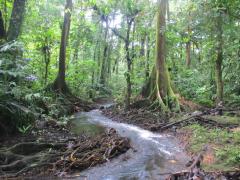 In Tafunsak, Kosrae State, Federated States of Micronesia (FSM), the Yela Valley Forest Legacy project already conserves the heart of the largest intact ka (Terminalia carolinensis) forest in the world.
In Tafunsak, Kosrae State, Federated States of Micronesia (FSM), the Yela Valley Forest Legacy project already conserves the heart of the largest intact ka (Terminalia carolinensis) forest in the world.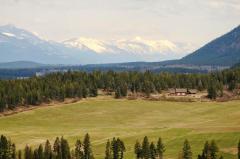 The Hall Mountain-Kootenai Valley Forest Legacy project builds on two decades of conservation work to conserve nearly eighty thousand acres within 25 miles of the project lands. The project is a successful demonstration of the value of collaboration in achieving landscape scale impacts.
The Hall Mountain-Kootenai Valley Forest Legacy project builds on two decades of conservation work to conserve nearly eighty thousand acres within 25 miles of the project lands. The project is a successful demonstration of the value of collaboration in achieving landscape scale impacts.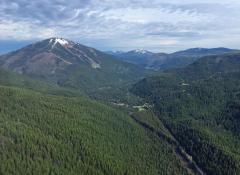 The Kootenai Forestlands Conservation Project builds on a legacy of private forest conservation in the State of Montana. The project put in place a conservation easement administered by Montana Fish, Wildlife and Parks to protect 22,295 acres of productive timberland and wildlife habitat. The property remains a working forest in private ownership and provides numerous year-round benefits.
The Kootenai Forestlands Conservation Project builds on a legacy of private forest conservation in the State of Montana. The project put in place a conservation easement administered by Montana Fish, Wildlife and Parks to protect 22,295 acres of productive timberland and wildlife habitat. The property remains a working forest in private ownership and provides numerous year-round benefits.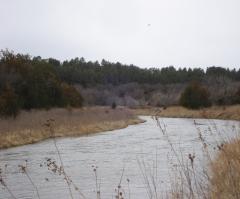 The Chat Canyon Wildlife Management Area was the first Forest Legacy project in the State of Nebraska. It opened in 2014 as the state’s first Forestry and Wildlife Management Area acquired through the USDA Forest Service Forest Legacy Program. To achieve this, the project brought together the USDA Forest Service, Nebraska Game and Parks Commission, Nebraska Environmental Trust, the National Wild Turkey Federation, and the University of Nebraska-Lincoln. It was the culmination of a 12-year effort by the Nebraska Forest Service to implement the Forest Legacy Program in the state.
The Chat Canyon Wildlife Management Area was the first Forest Legacy project in the State of Nebraska. It opened in 2014 as the state’s first Forestry and Wildlife Management Area acquired through the USDA Forest Service Forest Legacy Program. To achieve this, the project brought together the USDA Forest Service, Nebraska Game and Parks Commission, Nebraska Environmental Trust, the National Wild Turkey Federation, and the University of Nebraska-Lincoln. It was the culmination of a 12-year effort by the Nebraska Forest Service to implement the Forest Legacy Program in the state. Nevada’s first Forest Legacy project, the Ash Canyon Gateway project, sits between Carson City and Lake Tahoe. A cooperative project between the USDA Forest Service Forest Legacy Program, Carson City, and the Nevada Division of Forestry, the project secures Carson City’s only public motorized access from the east into Lake Tahoe Nevada State Park backcountry. Threatened by conversion to non-forest use by population growth, the Ash Canyon Gateway project supports local strategic initiatives and complements adjacent protected lands. The benefits of the project range from watershed and threatened and endangered species protection to economic, historic, and cultural benefits.
Nevada’s first Forest Legacy project, the Ash Canyon Gateway project, sits between Carson City and Lake Tahoe. A cooperative project between the USDA Forest Service Forest Legacy Program, Carson City, and the Nevada Division of Forestry, the project secures Carson City’s only public motorized access from the east into Lake Tahoe Nevada State Park backcountry. Threatened by conversion to non-forest use by population growth, the Ash Canyon Gateway project supports local strategic initiatives and complements adjacent protected lands. The benefits of the project range from watershed and threatened and endangered species protection to economic, historic, and cultural benefits.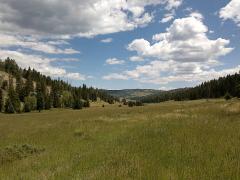 Adjacent to the Carson National Forest, the three-phase acquisition of the Upper Rio Chama River Watershed property, enabled by FLP, The Trust for Public Land, and the Forest Trust, took nearly a decade to complete. It now protects 11,655 acres of working forests and riparian areas. The project buffers the National Forest from the encroachment of private property development, reduces the wildland urban interface and associated wildland firefighting costs, preserves unique old growth forest, and supports a critical watershed.
Adjacent to the Carson National Forest, the three-phase acquisition of the Upper Rio Chama River Watershed property, enabled by FLP, The Trust for Public Land, and the Forest Trust, took nearly a decade to complete. It now protects 11,655 acres of working forests and riparian areas. The project buffers the National Forest from the encroachment of private property development, reduces the wildland urban interface and associated wildland firefighting costs, preserves unique old growth forest, and supports a critical watershed.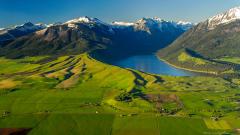 The East Moraine of Wallowa Lake is one of the world’s most perfectly formed glacial landscapes and an icon of eastern Oregon. Through the USDA Forest Service Forest Legacy Program (FLP), Wallowa County acquired 1,533 acres of this landscape to conserve its ecological, cultural, and economic significance in perpetuity. This conservation initiative has been supported by a remarkable coalition of local and state government agencies and nonprofits resulting in additional lands along the East Moraine being protected since the FLP property was acquired.
The East Moraine of Wallowa Lake is one of the world’s most perfectly formed glacial landscapes and an icon of eastern Oregon. Through the USDA Forest Service Forest Legacy Program (FLP), Wallowa County acquired 1,533 acres of this landscape to conserve its ecological, cultural, and economic significance in perpetuity. This conservation initiative has been supported by a remarkable coalition of local and state government agencies and nonprofits resulting in additional lands along the East Moraine being protected since the FLP property was acquired.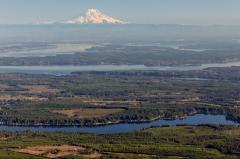 In collaboration with the USDA Forest Service Forest Legacy Program, the Washington State Department of Natural Resources and The Trust for Public Land worked with landowner Green Diamond Resource Company to protect approximately 20,000 acres of private forest lands in Mason County, near Puget Sound. Without protection, this land would have been at risk of conversion to non-forest use due to population pressure from nearby metropolitan areas. Protected, this working forest supports the local economy as well as critical habitat.
In collaboration with the USDA Forest Service Forest Legacy Program, the Washington State Department of Natural Resources and The Trust for Public Land worked with landowner Green Diamond Resource Company to protect approximately 20,000 acres of private forest lands in Mason County, near Puget Sound. Without protection, this land would have been at risk of conversion to non-forest use due to population pressure from nearby metropolitan areas. Protected, this working forest supports the local economy as well as critical habitat.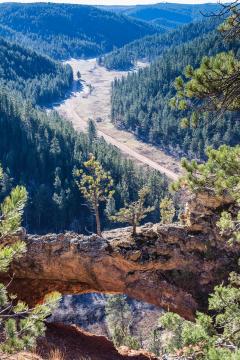 The USDA Forest Service Forest Legacy Program enabled the State of Wyoming to permanently protect 4,714 acres of scenic canyonlands on the western edge of the Black Hills National Forest in partnership with nonprofits, including the National Wild Turkey Federation, Rocky Mountain Elk Foundation, and The Nature Conservancy. The acquisition enhances public access to and management of 1.2 million acres of national forest, protects valuable water resources and supports habitat.
The USDA Forest Service Forest Legacy Program enabled the State of Wyoming to permanently protect 4,714 acres of scenic canyonlands on the western edge of the Black Hills National Forest in partnership with nonprofits, including the National Wild Turkey Federation, Rocky Mountain Elk Foundation, and The Nature Conservancy. The acquisition enhances public access to and management of 1.2 million acres of national forest, protects valuable water resources and supports habitat.